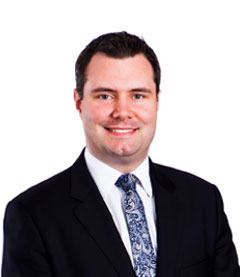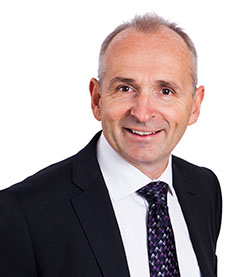-
Governance advisory
We guide boards and management teams in frameworks, team processes and leadership dynamics to deliver sustainable value.
-
Financial services advisory
Get market-driven expertise to achieve your goals in banking, insurance, capital markets, and investment management.
-
Business risk services
Our market-driven expertise helps firms keep growing and manage risk in an evolving regulatory landscape.
-
Risk
Meet risks with confidence and transform your business – we support you to manage risk and deliver on your goals.
-
Economic consulting
Bespoke guidance grounded in complex economic theory and practical sector insight to help you make the right decisions.
-
Government and public sector
Experience and expertise in delivering quality public sector advisory and audits.
-
Business consulting
Partnering with you to deliver sustainable business change that helps you realise your ambitions.
-
Transaction advisory services
Whether buying or selling, we help you get the deal done with our comprehensive range of transaction advisory services.
-
Financial accounting advisory services (FAAS)
Our FAAS team can support your finance function with the flexible resource they need to get results.
-
Corporate finance advisory
Building a business is never easy. We help you maximise the value of your business and find the right option.
-
Valuations
Help to understand or support the valuation of a business or asset.
-
Insolvency and global asset recovery
We provide asset tracing and seamless cross-border global recovery for clients.
-
Forensic and investigation services
Market-driven expertise in investigations, dispute resolution and digital forensics.
-
Restructuring
Our restructuring team help lenders, investors and management navigate contingency plans, restructuring and insolvency.
-
Transformation consulting
Is business transformation a priority for your organisation? Our expert insight and guidance can help you achieve it.
-
Pensions assurance
A tailored service that responds to evolving risks and regulations.
-
Accounting services
Optimise your growth with expert accounting services. Contact us today.
-
Royalty and intellectual property (IP) audits
Enhance IP asset protection with our royalty and IP audit services. Expertise in licensing, revenue detection, and compliance improvements.

-
Business consulting
Partnering with you to deliver sustainable business change that helps you realise your ambitions.
-
Corporate Simplification
Release value, reduce compliance complexity, and improve tax efficiency by streamlining your group structure.
-
Economic consulting
Bespoke guidance grounded in complex economic theory and practical sector insight to help you make the right decisions.
-
Financial accounting advisory services (FAAS)
Our FAAS team can support your finance function with the flexible resource they need to get results.
-
Governance advisory
We guide boards and management teams in frameworks, team processes and leadership dynamics to deliver sustainable value.
-
International
Unlock global opportunities with our local expertise and worldwide reach.
-
People advisory
Driving business performance through people strategy and culture.
-
Strategy Group
Successful business strategy is rooted in a clear understanding of the market, customer segmentation and how purchase decisions vary.
-
Respond: Data breach, incident response and computer forensics
Are you prepared for a cyber failure? We can help you avoid data breaches and offer support if the worst happens.
-
Comply: Cyber security regulation and compliance
Cyber security regulation and compliance is constantly evolving. Our team can support you through the digital landscape.
-
Protect: Cyber security strategy, testing and risk assessment
Cyber security threats are constantly evolving. We’ll work with you to develop and test robust people, process and technology defences to protect your data and information assets.

-
Corporate finance advisory
Building a business is never easy. We help you maximise the value of your business and find the right option.
-
Debt advisory
Working with borrowers and private equity financial sponsors on raising and refinancing debt. We can help you find the right lender and type of debt products.
-
Financial accounting advisory services (FAAS)
Our FAAS team can support your finance function with the flexible resource they need to get results.
-
Financial modelling services
Financial modelling that helps you wrestle with your most pressing business decisions.
-
Operational deal services
Enabling transaction goals through due diligence, integration, separation, and other complex change.
-
Our credentials
Search our transactions to see our experience in your sector and explore the deals advisory services we've delivered.
-
Transaction advisory services
Whether buying or selling, we help you get the deal done with our comprehensive range of transaction advisory services.
-
Valuations
Help to understand or support the valuation of a business or asset.
-
The ESG agenda
Shape your ESG agenda by identifying the right metrics, sustainable development and potential business value impact.
-
ESG driven business transition
Whatever your ESG strategy, we can support your organisation as it evolves while maximising efficiency and profitability.
-
ESG programme and change management
Do you have the right capabilities to drive the delivery of your ESG strategy to realise your targets?
-
ESG risk management
You must protect, comply, understand and influence to successfully manage the risk involved with ESG issues. We can help.
-
ESG strategy, risk and opportunity identification
We can help you clearly define your ESG Strategy, with the risks and opportunities identified and managed.
-
Create value through effective ESG communication
Building trust and engagement with your stakeholders on your ESG strategy.
-
ESG metrics, targets and disclosures
The pressure to report your ESG progress is growing. Do your targets measure up?
-
ESG governance, leadership and culture framework
Make the most of ESG opportunities by effectively embedding your strategy across your organisation.
-
ESG and non-financial assurance
Support your board to be confident in supplying robust information that withstands scrutiny.
-
Transition planning to net zero
Supporting your organisation in the transition to net zero.
-
Actuarial and insurance consulting
We consult extensively to the life insurance, general insurance, health insurance and pensions sectors.
-
Business risk services
Our market-driven expertise helps firms keep growing and manage risk in an evolving regulatory landscape.
-
Financial crime
Helping you fight financial crime in a constantly changing environment
-
Financial services business consulting
Leverage our diverse capabilities to manage challenges and take opportunities: from assurance to transformation
-
Financial services tax
Helping financial services firms navigate the global financial services and funds tax landscape.
-
Regulatory and compliance
Providing an exceptional level of regulatory and compliance to firms across the financial services industry.
-
Corporate intelligence
Corporate intelligence often involves cross-border complexities. Our experienced team can offer support.
-
Litigation support
Industry-wide litigation support and investigation services for lawyers and law firms.
-
Disputes advisory
Advising on quantum, accounting and financial issues in commercial disputes.
-
Forensic investigations and special situations
Do you need clarity in an uncertain situation? If you're accused of wrongdoing we can help you get the facts right.
-
Forensic data analytics
Our forensic data analytics team are helping businesses sift the truth from their data. See how we can help your firm.
-
Monitoring trustee and competition services
Monitoring trustee services to competition, financial and regulatory bodies.
-
Financial crime
Supporting your fight against financial crime in an ever-changing environment
-
Whistleblowing and investigation support
Whistleblowing frameworks provide many benefits – find out how to build trust and manage risks in a confidential, cost-effective, robust way.
-
Public sector advisory
To deliver excellent public services, local and central government need specialist support.
-
Public sector consulting
Helping public sector organisations maintain oversight of services and understand what's happening on the ground.
-
Public sector audit and assurance
As a leading UK auditor, we have unparalleled insights into the risks, challenges and opportunities that you face.
-
Competition damages and class actions
Helping you recover damages owed from anti-competitive practices.
-
Contentious estates and family disputes
We manage complex and sensitive disputes through to resolution.
-
Digital Asset Recovery
Get guidance and technical expertise on digital finance and cryptoasset recovery from our dedicated crypto hub.
-
Grant Thornton Offshore
Grant Thornton Offshore is our one-stop global solution for insolvency, asset recovery, restructuring and forensics services.
-
Insolvency Act Portal
Case information and published reports on insolvency cases handled by Grant Thornton UK LLP.
-
Litigation support
Industry-wide litigation support and investigation services for lawyers and law firms.
-
Personal insolvency
We can support you to maximise personal insolvency recovery and seek appropriate debt relief.
-
South Asia business group
We help Indian companies expand into the UK and invest globally. We also help UK companies invest and operate in India.
-
US business group
Optimise your trans-Atlantic operations with local knowledge and global reach.
-
Japan business group
Bridging the commercial and cultural divide and supporting your ambitions across Japan and the UK.
-
Africa business group
Connecting you to the right local teams in the UK, Africa, and the relevant offshore centres.
-
China-Britain business group
Supporting your operations across the China – UK economic corridor.
-
Asset based lending advisory
Helping lenders, their clients and other stakeholders navigate the complexities of ABL.
-
Contingency planning and administrations
In times of financial difficulty, it is vital that directors explore all the options that are available to them, including having a robust ‘Plan B’.
-
Corporate restructuring
Corporate restructuring can be a difficult time. Let our team make the process simple and as stress-free as possible.
-
Creditor and lender advisory
Whether you're a creditor or lender, complex restructurings depend on pragmatic commercial advice
-
Debt advisory
Our debt advisory team can find the right lender to help you in restructuring. Find out how our experts can support you.
-
Financial services restructuring and insolvency
Financial services restructuring and insolvency is a competitive marketplace. Our team can help you navigate this space.
-
Pensions advisory services
DB pension-schemes need a balanced approach that manages risk for trustees and sponsors in an uncertain economy.
-
Restructuring and insolvency tax
Tax will often be crucial in a plan to restructure a distressed business. Our team can guide you through the process.
-
Restructuring Plans
Market leading experience in advising companies and creditors in Restructuring Plan processes.

-
Artificial intelligence
Our approach to the design, development, and deployment of AI systems can assist with your compliance and regulation.
-
Controls advisory
Build a robust internal control environment in a changing world.
-
Data assurance and analytics
Enhancing your data processes, tools and internal capabilities to help you make decisions on managing risk and controls.
-
Enterprise risk management
Understand and embrace enterprise risk management – we help you develop and connect risk thinking to your objectives.
-
Internal audit services
Internal audit services that deliver the value and impact they should.
-
Managing risk and realising ESG opportunities
Assess and assure risk and opportunities across ESG with an expert, commercial and pragmatic approach.
-
Project, programme, and portfolio assurance
Successfully delivering projects and programmes include preparing for the wider impact on your business.
-
Service organisation controls report
Independent assurance provides confidence to your customers in relation to your services and control environment.
-
Supplier and contract assurance
Clarity around key supplier relationships: focusing on risk, cost, and operational performance.
-
Technology risk services
IT internal audits and technology risk assurance projects that help you manage your technology risks effectively.

-
Capital allowances (tax depreciation)
Advisory and tools to help you realise opportunities in capital allowances.
-
Corporate tax
Helping companies manage corporate tax affairs: delivering actionable guidance to take opportunities and mitigate risk.
-
Employer solutions
We will help you deliver value through your employees, offering pragmatic employer solutions to increasing costs.
-
Financial services tax
Helping financial services firms navigate the global financial services and funds tax landscape.
-
Indirect tax
Businesses face complex ever changing VAT regimes, guidance and legislation. We can help you navigate these challenges.
-
International tax
Real-world international tax advice to help you navigate a changing global tax landscape.
-
Our approach to tax
We advise clients on tax law in the UK and, where relevant, other jurisdictions.
-
Private tax
Tax experts for entrepreneurs, families and private business. For now and the long term.
-
Real estate tax
Stay ahead of real estate tax changes with holistic, tax-efficient solutions.
-
Research and development tax incentives
We can help you prepare optimised and robust research and development tax claims.
-
Tax dispute resolution
We make it simple to stay compliant and avoid HMRC tax disputes
-
Tax risk management
We work with you to develop effective tax risk management strategies.
-
Skills and training
Get the right support to deliver corporate and vocational training that leads the way in an expanding market.
-
Private education
Insight and guidance for all businesses in the private education sector: from early years to higher education and edtech.
-
Facilities management and property services
Get insight and strategic support to take opportunities that protect resilience and drive UK and international growth.
-
Recruitment
Helping recruitment companies take opportunities to achieve their goals in a market where talent and skills are key.
-
Food and beverage (F&B)
We can help you find the right ingredients for growth in your food and beverage business.
-
Travel, tourism and leisure
Tap into our range of support for travel, tourism and leisure businesses in this period of challenge and change.
-
Retail, e-commerce and consumer products
With multiple challenges and opportunities in the fast-evolving retail sector, make sure you are ready for them.
-
Banking
Our expertise and insight can help you respond positively to long term and emerging issues in the banking sector.
-
Capital markets
2020 is a demanding year for capital markets. Working with you, we're architecting the future of the sector.
-
Insurance
Our experienced expert team brings you technical expertise and insight to guide you through insurance sector challenges.
-
Investment management
Embracing innovation and shaping business models for long-term success.
-
Pensions
Pension provision is an essential issue for employers, and the role of the trustee is becoming increasingly challenging.
-
Payments advisory and assurance
Payment service providers need to respond to rapidly evolving technical innovations and increased regulatory scrutiny.

-
Central and devolved government
Helping central and devolved governments deliver change to improve our communities and grow our economies.
-
Infrastructure and transport
Delivering a successful transport or infrastructure project will require you to balance an often complex set of strategic issues.
-
Local government
Helping local government leverage technical and strategic expertise deliver their agendas and improve public services.
-
Regeneration development and housing
We provide commercial and strategic advice to assist your decision making in pursuing your objectives.
-
Health and social care
Sharing insight and knowledge to deliver transformation and improvement to health and social care services.
-
Charities
Supporting you to achieve positive change in the UK charity sector.
-
Education and skills
The education sector has rarely faced more risk or more opportunity to transform. You need to plan for the future.
-
Social housing
We are committed to helping change social housing for the better, and can help you make the most of every opportunity.

-
Technology
We work with dynamic technology companies of all sizes to help them succeed and grow internationally.
-
Telecommunications
Take all opportunities to realise your goals in telecommunications: from business refresh to international expansion.
-
Media
Media companies must stay agile to thrive in today’s highly competitive market – we’re here to support your ambitions.
-
Career development
The support you need will vary throughout your career, here are just some of the ways we'll support you to you excel with us.
-
How we work
Our approach to how we work, ensures that when we are making choices about how, where or when we work, we have the support and tools we need.
-
Reward and benefits
We are committed to building a culture where our people have access to the necessary benefits to help promote a healthy lifestyle and thrive.
-
Inclusion and diversity
Included and valued for your difference is how everyone should feel at work. Not just because it’s right, but because we’re all at our best when we’re able to be ourselves.
-
ESG: environment and community impact
Our ESG framework enables responsible, sustainable, and ethical operations. We prioritise the environment, our broader societal impact, and our firm's governance to protect the planet, foster inclusivity and wellbeing, support our communities, and bolster our firm's resilience.
-
What we do
It’s an exciting time to be joining Grant Thornton, especially as a trainee at the start of your career. Learn about our teams and the work we do.
-
Life as a trainee
Everything you need to know about life as a trainee, from the experiences you'll get to the skills you need.
-
Employability hub
Our employability hub is designed to help you feel prepared for the application process, and guide you through the decisions you will need to make throughout.
-
Our programmes
Whether you are looking to join us straight from school or with a degree, or even looking for some work experience, we have a programme that is right for you.
-
Parents, carers and teachers hub
Access information and support to help inform career discussions with your young people.
-
FAQs
We hope you can find all the information you need on our website, but to help we've collated a few of the questions we hear quite frequently when speaking to candidates.
-
Advisory
Our advisory practice provides organisations with the advice and solutions they need to unlock sustainable growth and navigate complex risks and challenges.
-
Audit
Every day our audit teams help people in businesses and communities to do what is right and achieve their goals.
-
Tax
The tax landscape is evolving, and our clients need us more than ever to navigate the complexities with them.
-
Central Client Service
From finance and information systems, to marketing and people teams we have a diverse range of teams supporting our business.
-
Our recruitment process
We strive to ensure our interview process is barrier free and sets you up for success, as well as being wholly inclusive and robust. Learn about our process here.
-
International hiring
Our international talent is an important part of our firm, joining us you will be joining a growing community of international hires.
-
Armed forces
As an Armed Forces Friendly organisation we are proud to support members of the Armed Forces Community as they develop their career outside of the Armed Forces.

A harsh funding regime which hasn't adapted to changing macroeconomic realities means the viability of large parts of the pharmacy sector is at risk unless the model changes. Very simply, at a sector-wide level, revenue has remained fixed while costs have increased significantly. No business model is sustainable under such circumstances.
The sector landscape
Many pharmacies are struggling due to years of NHS underfunding, increasing costs, staff shortages, and medicine supply issues. More than 1,500 community pharmacies have closed since 2015 with 700 of these since 2021. Multi-site operators have seen the biggest decline in pharmacy numbers. For example, Lloyds Pharmacy went into liquidation in January 2024, following a year-long divestment campaign of over 1,000 high street and community pharmacies. Boots is in the process of reducing its pharmacies by 300 branches and Rowlands Pharmacy has sold over a fifth of its branches in the last three years.
The majority of the sector now consists of regional multiples (some of whom, like the nationals, have their own wholesaling operations) and independent contractors. Smaller businesses operating between one and five pharmacies account for almost 50% of the sector. And these contractors don't attract the same sort of headlines as the larger, nationwide operators.
A legacy of significant underfunding
Despite rising inflation and business costs, the NHS pharmacy funding model has remained fixed. Over the period of the current Community Pharmacy Contractual Framework (CPCF) - 2019-2024 - pharmacies have experienced a 30% real terms reduction in core funding. Analysis by the CCA shows that this equates to an annual shortfall of over £750 million, equivalent to £67,000 per pharmacy in England.
Around 30% of pharmacies NHS funding derives from the retained margin (or Category M funding) – the margin they're allowed to make on medicines purchases. This is currently set at £800 million and hasn't changed since 2014 despite a dramatic increase in the average number of prescriptions per pharmacy. Many pharmacies consistently dispense medicines at a loss.
Any margin that's claimable by pharmacies via purchasing medicines at reduced prices is often paid months after the transaction, and due to a complicated averaging system, pharmacists are often not clear how much they'll receive. Not only does this exacerbate cash flow, pharmacists are having to make spending decisions without knowing how much money they have.
Operational challenges
Regular polling by Community Pharmacy England (CPE) shows that instability in the medicines market, in terms of both availability and price, is ranked as one of the most severe pressures facing pharmacies.
In 2023 there were 1,634 alerts relating to drugs shortages compared with 648 in 2020, a 152% increase. While many supply problems are global, Brexit has weakened the UK’s ability to respond as the UK isn't part of European supply chains and authorisations. The difficulties and costs related with drug sourcing creates significant extra work for pharmacists and intensifies wider financial pressures.
There's also an increasing shortage of community pharmacists themselves. Many have left the sector under the Additional Roles Reimbursement Scheme, a scheme introduced in 2019 which reimburses GPs the salaries and costs of employing clinical pharmacists. As of September 2023, almost 5,300 pharmacists had been recruited into GP surgeries. As a result of this shortage, the average hourly locum rate for pharmacists in England rose 85% from £20.02 in 2020 to £37.14 in July 2023.
The rise in the national minimum wage (NMW) has further impacted pharmacies' staffing costs. The NMW has increased nearly 40% since the start of the current contractual framework, with the latest rise implemented in April 2024, adding an additional cost of between £150-195 million to the community pharmacy sector.
Uncertain funding environment
The current CPCF is due to end in 2024, but there's still no arrangement in place for future funding. Negotiations have started between CPE, the Department of Health and Social Care and NHS England, but discussions are currently only due to cover funding arrangements for pharmacies in 2024/25.
This limbo is compounded by the fact that current government budgets, including for the NHS, are set to expire in April 2025.
This instability not only leads to delayed and inefficient spending decisions, it also hampers the ability of the sector to plan and attract much needed investment. The sector awaits much needed clarity from the new Government.
Pharmacy First
Against this backdrop of inadequate funding and operational pressures, pharmacists are being asked to provide more front-line services than ever. Pharmacy First was launched on 31 January 2024, with the aim of giving patients quick and accessible care for seven common conditions and ease pressure on GPs. A report by the Company Chemists’ Association (CCA) showed there had been strong patient demand for the service, with CCA members alone delivering over 90,000 consultations in the first two months.
However, it has placed significant additional pressure on pharmacies, who have had to train pharmacists and reconfigure stores to provide consultation rooms. The Government provided £645 million funding for Pharmacy First but research by the Association of Independent Multiple Pharmacies has shown that 70% of pharmacy owners don't think this is sufficient remuneration for the time and clinical decision making involved.
Hub and Spoke: the future of pharmacy?
In May 2024, the Department of Health and Social Care’s (DHSC’s) response to the consultation on hub and spoke dispensing confirmed long-proposed changes to allow dispensing across different legal entities from 2025.* While the exact model and details are still to be confirmed, this opens a range of possibilities both larger and smaller contractors.
For larger operators, there's an opportunity to improve utilisation at the hub by providing dispensing and logistics solutions to smaller contractors and even competitors. For smaller operators, there's an opportunity to outsource certain functions which can release working capital and potentially provide a better service to customers.
Adapting for the future – how can we help?
There are four key areas where we support pharmacy operators to help be future-fit:
Implementing the best financing structures
Pharmacies have many different financing options and getting the right mix can optimise cash flow. We help contractors explore all these options and implement the best structure. These options include:
- Raising finance from the mainstream bank sector – there's appetite to support contractors because the NHS is a low-risk customer, although demonstrating cost control will also be relevant
- Contractors should consider how to unlock capital and cashflow from existing property portfolios, or raise development finance for distribution, warehousing, and hub centres
- Asset-based lending (ABL) facilities may be appropriate on drug inventory, particularly in wholesaling businesses, and asset finance can be used to support the installation of automated dispensing robots, whether in-store of in distribution (hub) centres
Whole business forecasting
With operators working under significant financial pressure and with multiple unknowns, accurate and granular forecasting is essential, both for business-as-usual and for seeking external financing.
We help operators design best-in-class forecasting, flexed to the size of your business, including dashboard reporting incorporating programmes, such as Power BI. This helps areas of strength and concern be identified quickly while longer-term forecasting assist with investment decisions.
Operational excellence – hub and spoke
Pharmacy operators should consider whether implementing a hub and spoke model or a similar distribution centre model would be beneficial for their business.
This could be the contractor building their own hub and spoke capabilities or making the decision to outsource elements of dispensing.
We have advised major UK and European pharmacy and retail groups on the implementation and subsequent optimisation of hub and spoke facilities. Integration across IT systems, in store and centrally, are often key – as are the cultural considerations of operating in a different way.
Indirect tax recovery from HMRC
VAT treatment of the single activity fee (SAF) has long been uncertain, but HMRC appears to have (finally) decided the SAF should be zero-rated.
To the extent that pharmacies have historically declared output VAT and restricted input VAT recovery in relation to SAF income, there's now an opportunity to go back and make VAT reclaims. As with all retrospective UK VAT claims, this is capped by a rolling four-year window.
We would recommend considering this promptly in order to 'stop the clock' on the earliest periods in the four-year window and minimise any value falling out of time. We can help you with your claims in order to generate much needed additional cash into your business.
* Update: In September 2024, the Department of Health and Social Care said they are not in a position to implement the hub and spoke dispensing between different pharmacy owners by 1 January 2025. There is currently no further clarity on time scales.
For more information or advice, contact Christopher McLean or Dan Smith.







